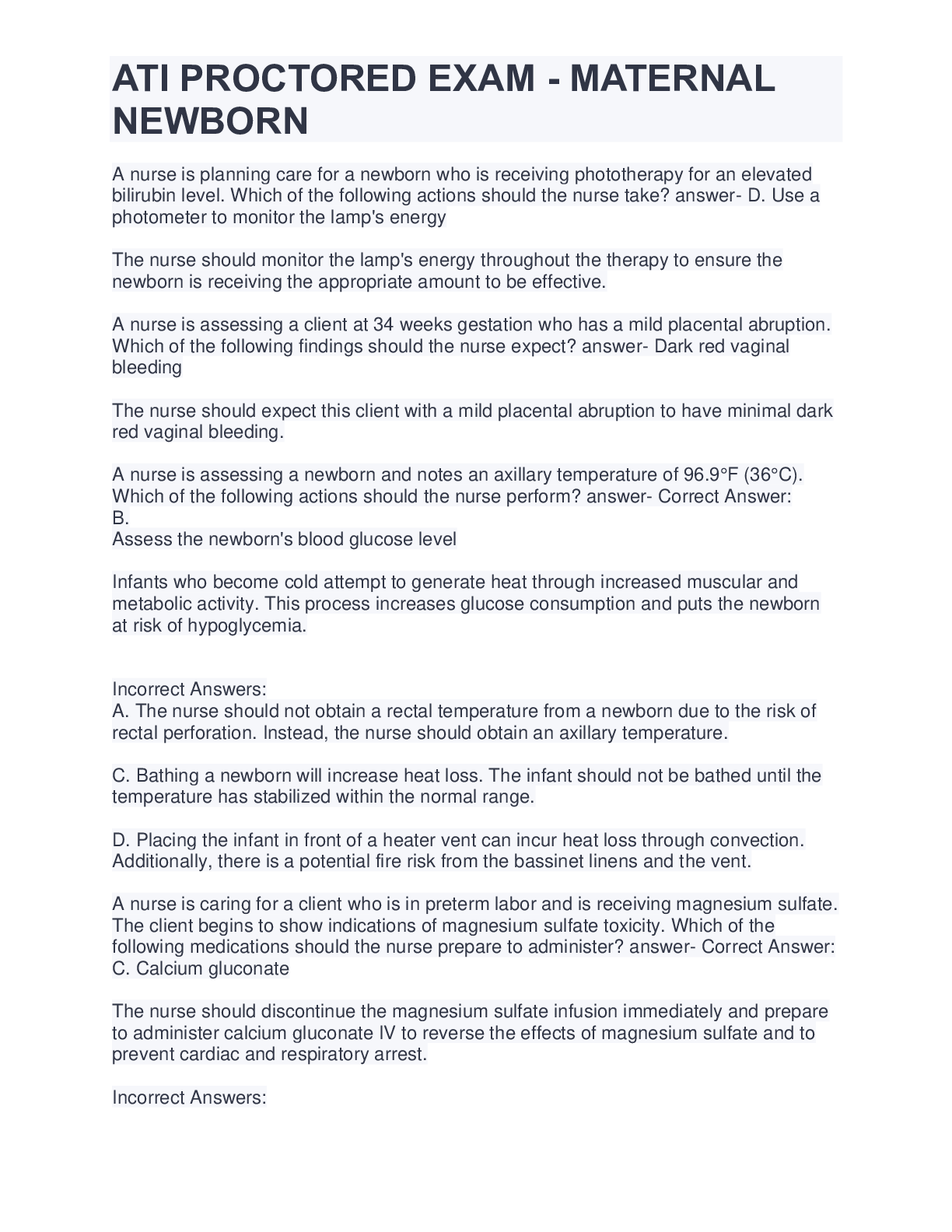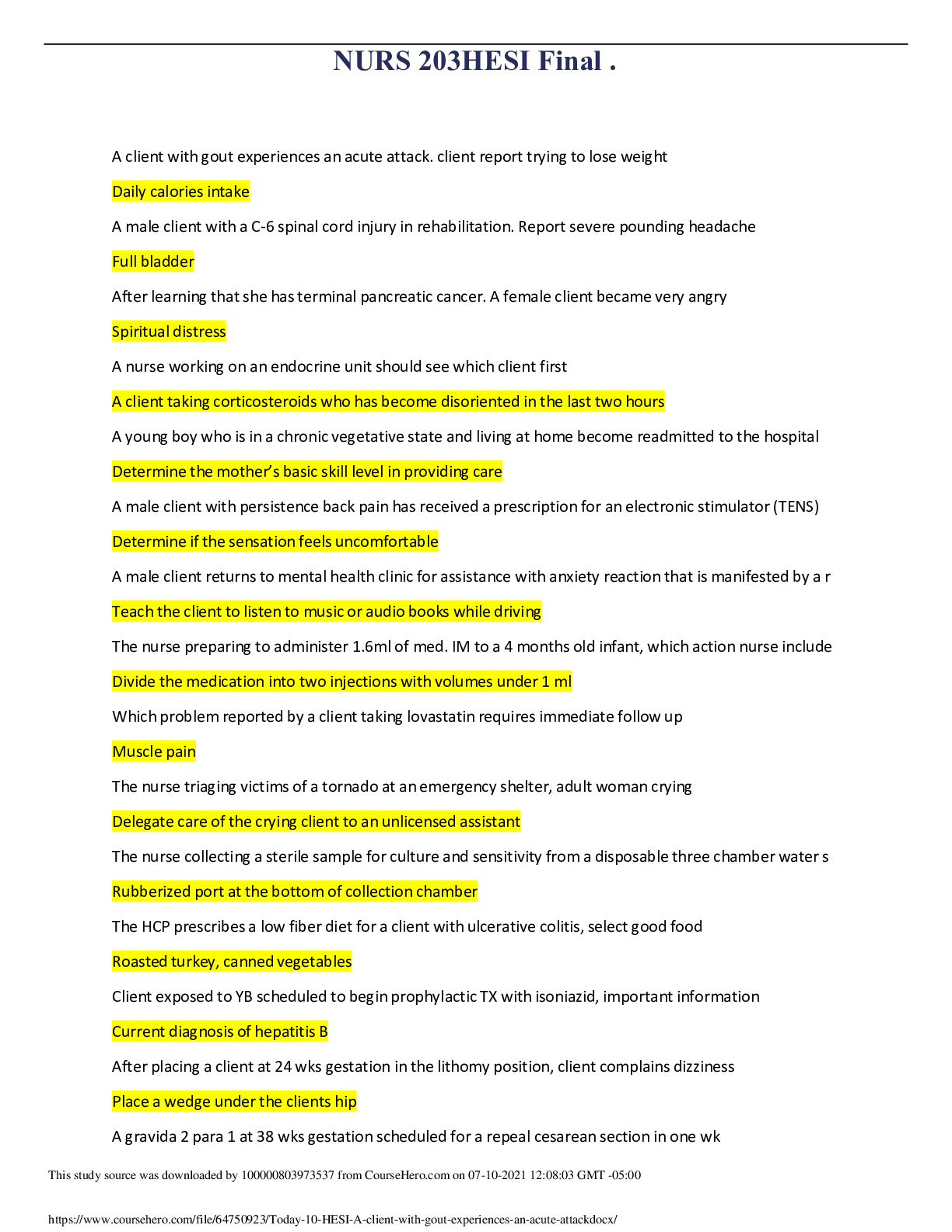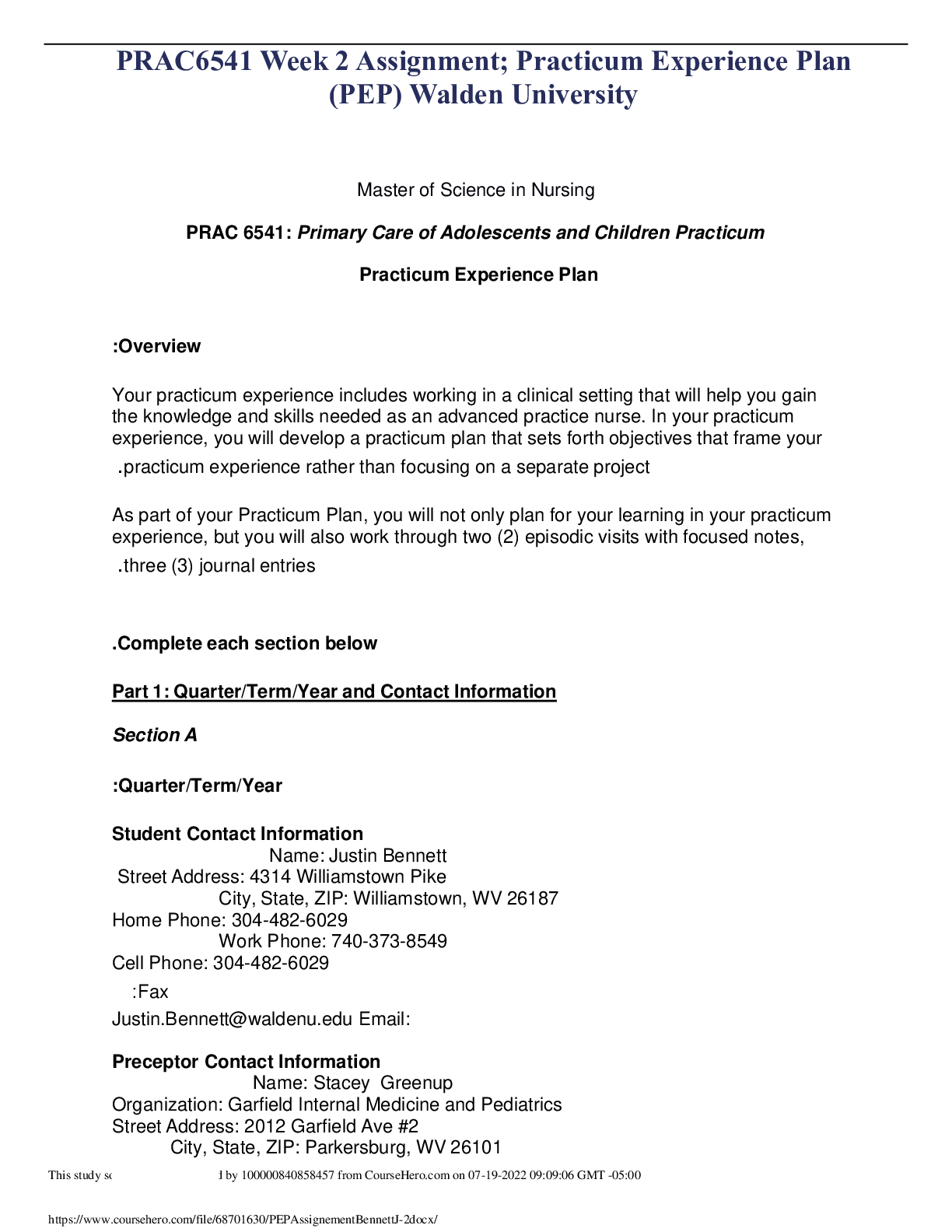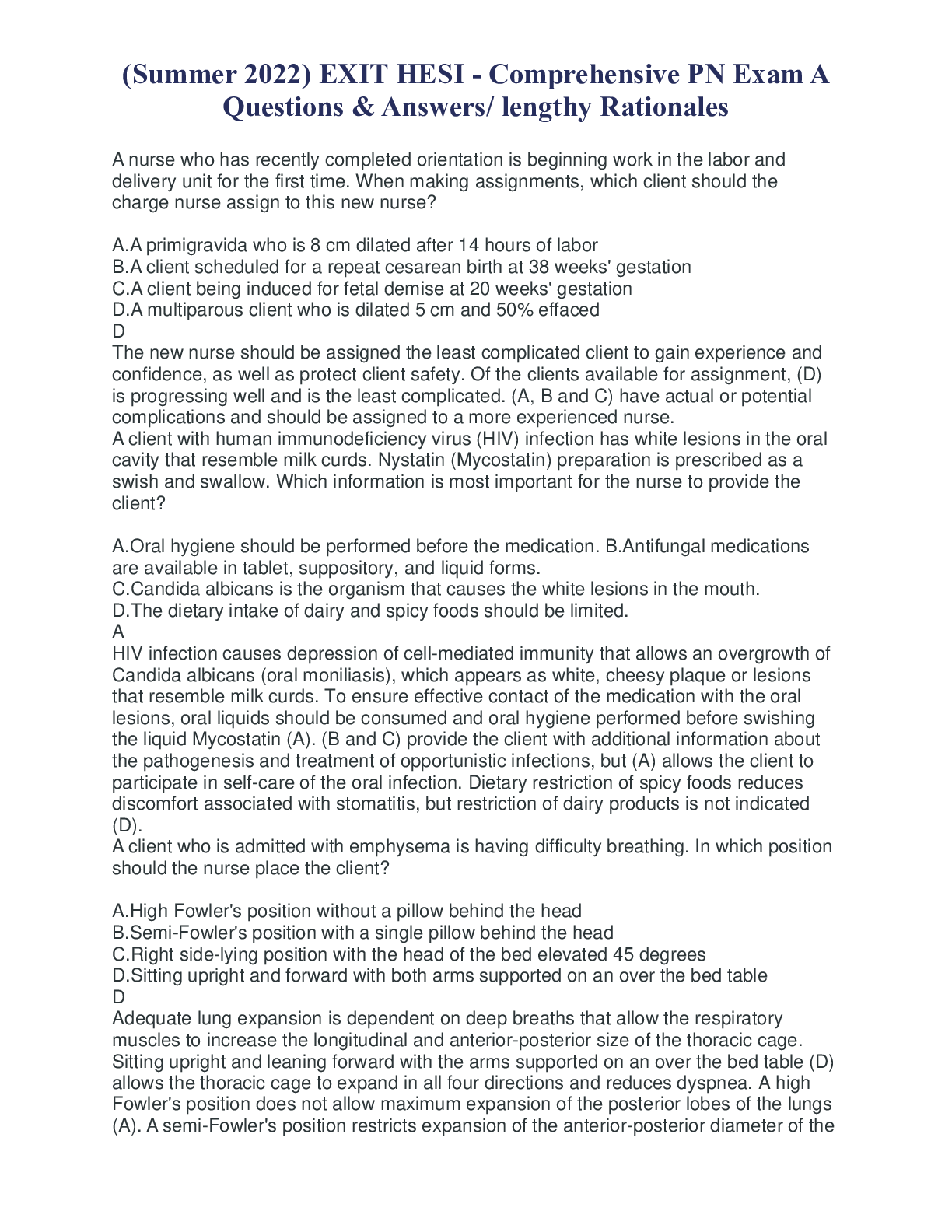*NURSING > EXAM > NR 503 Week 2 Discussion: Epidemiological Methods – HPV: Human Papilloma Virus,WELL EXPLAINED GRAD (All)
NR 503 Week 2 Discussion: Epidemiological Methods – HPV: Human Papilloma Virus,WELL EXPLAINED GRADED A.
Document Content and Description Below
1. Choose one of the following: o Zika o Salmonella o MRSA o Clostridioides difficile o Depression (Choose population: Adult, Older Adult, Adolescent) o Attention Deficit Disorder o Dementia o... Osteoporosis 2. Next, choose a diagnostic or screening method (related to your choice from the list of health issues above). You may use one of the following web sites to locate a screening tool, a scholarly article, or a tool from a professional web site of your choice (for example, from the American Psychological Association). 3. Reply to the following prompt: o Describe the diagnostic or screening tool selected, its purpose, and what age group it targets. o Has it been specifically tested in this age group? o Next, discuss the predictive ability of the test. For instance, how do you know the test is reliable and valid? What are the reliability and validity values? What are the predictive values? Is it sensitive to measure what it has been developed to measure, for instance, HIV, or depression in older adults, or Lyme disease? Would you integrate this tool into your advanced practice based on the information you have read about the test, why or why not? 4. You should include a minimum of two (2) scholarly articles from the last five (5) years (3 is recommended). 5. Respond to a minimum of two (2) individuals, peer and/or faculty, with a scholarly and reflective post of a minimum of two (2) paragraphs of 4-5 sentences. A minimum of one (1) scholarly article should be utilized to support the post in addition to your textbook. Zika virus is a tetrogenic virus that is most commonly passed through the bites of infected mosquitoes. The incidence and prevalence of the zika virus, as a result, is determined by the prevalence of mosquitoes in a given geographical area. The detrimental risk of contracting the disease is highest amongst pregnant individuals and the possible fetal and maternal issues zika could cause. Typically, screening for zika begins at the patient intake assessment at a doctor’s appointment. In an article by DeCocker (2019), “CDC’s top priority for Zika is to protect pregnant women because of the risks associated with ZIKV infection during pregnancy” (p. 292). This article goes on to state that screening must be performed at every prenatal and postpartum visit to educate the patient on risk of exposure and to determine, and be able to act upon, exposures in a timely fashion (p. 293). The patient is typically asked if she has visited a zika infected area or has traveled outside the country within the last ninety days. If exposure has been detected, bloodwork is performed to determine if the patient is carrying the Zika antibody while appropriate counseling is done pre- and post- testing. DeCocker (2019) studied testing for this particular patient population and determined that while studies exist more studies are needed to identify “the limitations of prenatal and postnatal testing for detection of ZIKV-associated birth defects and long-term neurocognitive deficits are needed to improve guiding and counseling for women with a possible infectious exposure” (p. 293). The testing that does exist merely determines the presence of the antibodies in the prenatal and post-natal population. A study by Bingham, Cone, Mock, Heberlein-Larson, Stanek, Blackmoer and Likos (2016), determined the differences in Zika testing utilizing urine, serum, and saliva specimens. The study identified that limited data exists in regard to testing for zika utilizing alternative methods, such as urine and saliva. However, the authors suspect that saliva can be contributed to the passing of the disease (p. 477). The study compared “53 persons with Zika virus disease with urine, saliva, and serum specimens collected on the same date found positive results from testing in 49 (92%) urine specimens, 43 (81%) saliva specimens, and 27 (51%) serum specimens” (p. 477). Because a limited amount of studies has been done, the study concluded in stating that the most indicative way of determining Zika antibodies is through the utilization of serum analysis, but urine may also be a possible screening tool. In my personal practice, if there were a quick-test method to determine positive antibody exposure in urine, such as a dipstick, it would be timelier and less invasive than serum testing. It also maintains a level of truth, if patients are poor historians. In my opinion, testing methods that are least invasive but also provides quick and accurate results is beneficial for all parties involved. [Show More]
Last updated: 1 year ago
Preview 1 out of 2 pages
Instant download

Buy this document to get the full access instantly
Instant Download Access after purchase
Add to cartInstant download
Reviews( 0 )
Document information
Connected school, study & course
About the document
Uploaded On
May 23, 2021
Number of pages
2
Written in
Additional information
This document has been written for:
Uploaded
May 23, 2021
Downloads
0
Views
38


















